Straight bite

Dentists distinguish several varieties of the correct bite.
Among them: progenic, direct, orthognathic and biprognathic bites.
All these species are physiological and ensure the full functioning of the dentition.
The main signs of a physiological bite:
- The teeth of the upper jaw are in contact with the lower teeth of the same name.
- The midline of the face runs between the central incisors.
- There are no gaps in the dentition between the teeth.
- The functions of chewing and speech are not impaired.
A direct bite is a type of physiological bite that is as close to ideal as possible.
Owners of a direct bite have such a staging of teeth, in which the upper and lower incisors are closed by cutting edges.
In the opinion of some orthodontists, a direct bite is a borderline form between a regular bite and anomaly, since in some cases this form of occlusion leads to rapid erasure of the teeth at the points of contact.
Cons and pros
The presence of a direct bite can have the following unpleasant consequences for its owner:
- Increased tooth abrasion, which affects the aesthetics in such a way that a person has a decrease in the lower third of the face.
- As a result of the wear of the dentition, a dysfunction of the temporomandibular joint is observed.
- With the advanced form, there may be a decrease in hearing, impaired diction and the appearance of pain in the temporomandibular joint.
The polished surfaces of the cutting edges of the teeth resulting from strong enamel abrasion are highly resistant to caries. In this case, periodontal disease of teeth does not occur more often than with another form of regular occlusion.
How to fix an anomaly
Direct bite treatment is performed using orthodontic devices: bracket - system or mouthguards.
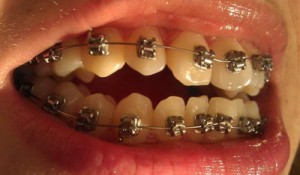
- Modern mouthguards are convenient to use, protect teeth from abrasion, they are easy to care for, they are not noticeable in the mouth.
- Braces are installed in the presence of serious violations of the dentition.
- They are set for the entire duration of treatment, during which the occlusion is corrected.
Using braces, it is possible to carry out the correction of almost all dentofacial anomalies.
Causes of malocclusion in a child
- The most common cause of malocclusion is adverse heredity. This type of pathology is more difficult to treat.
- Problems with the development of anomalies can develop in the process of intrauterine development.
- Adverse pregnancy, viral infections, metabolic disorders, anemia can cause abnormal development of the dentition.
- Complications during childbirth, resulting in birth injury in the newborn.
- Artificial feeding of the child, prolonged use of a dummy.
- Improper breathing of the baby: if the baby breathes through the mouth.
- Teething disorder.
- Presence of bad habits in a child: sucking toys, fingers.
- Diseases of the dentition.
- Premature loss of primary teeth.
- Injuries to the jaw or teeth.
- Lack of fluoride and calcium in the body.
- Violation of metabolic processes in the body.
- Untimely restoration of lost teeth.
Video: “Causes of malocclusion”
Prevention of malocclusion
In the absence of a genetic predisposition, the following measures will help to avoid the development of anomalies:
- A pregnant woman needs to carefully monitor her health.
- As directed by the attending physician, consume foods containing calcium in sufficient quantities.
- Pay sufficient attention to the proper feeding of the newborn. Try to keep the baby breastfed as long as possible, as breastfeeding has a lasting effect on the formation of the correct bite.
- It is necessary to monitor the correct breathing of the child. The baby should breathe through his nose. If breathing is carried out through the mouth, then the child should be shown to the ENT doctor and appropriate treatment should be carried out.
- Timely wean a child from such bad habits as sucking nipples or fingers.
- Visit your pediatric dentist regularly.
- Make sure that the baby's nutrition is complete.
Periods when it is necessary to carefully monitor the bite:
- The initial stage is during the first six months after the birth of the baby.
- The period of formation of a milk or temporary bite is from six months to three years.
- The stage of the formed temporary bite is from three to six years. During this period, the jaws grow and they are preparing for the eruption of permanent teeth.
- The period of a replacement bite - lasts from 6 to 12 years. At this time, there is a change in primary teeth permanent.
- The formation of a permanent bite occurs in the period from 12 to 15 years. At this stage, the change of milk teeth ends.
Photo: before and after
 |
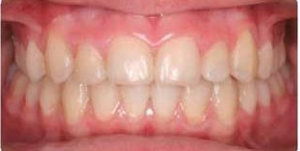 |
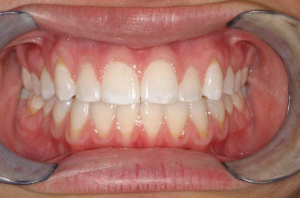 |
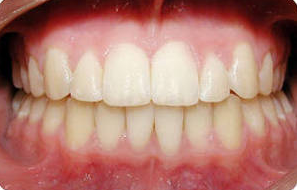 |
 |
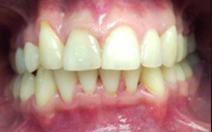 |